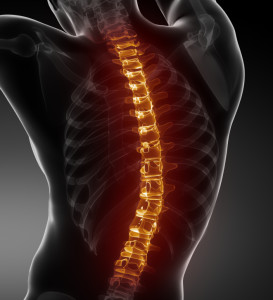 Someone you know or love has been in a car crash or an accident at work. He or she is still in the hospital, but you are already wondering, What can we expect?
Someone you know or love has been in a car crash or an accident at work. He or she is still in the hospital, but you are already wondering, What can we expect?
When you hear about injuries to the spine, the first image is likely to be a person who is confined to a wheelchair for life. But because the spine is so complicated, with many different structures and functions and levels, the reality is that spinal cord injuries (SCI) can take a variety of paths.
Much of the prognosis depends on the type of damage, the age and condition of the patient before they were hurt, and how speedily they are diagnosed and treated.
The most common cause of spinal cord injury (SCI) is car accidents, followed by work-related falls and then sports injuries, according to the Christopher and Dana Reeve Foundation.
The Foundation was founded to helping educate the public after Christopher Reeve (AKA Superman) was paralyzed after a fall from a horse. Although Reeve needed a wheelchair and a portable ventilator for the rest of his life, he went on to live a productive and inspiring life.
Christopher Reeve died at the age of 52 from cardiac arrest. His doctors said the heart attack was caused by an allergic reaction to an antibiotic, which was prescribed to fight an infection.
Location of Spinal Injury Leads to Different Conditions
Christopher Reeve’s condition was called tetraplegia (also called quadriplegia), meaning paralysis of both the arms and legs. Paraplegia means the patient has lost function in just the lower extremities (legs and feet). There are partial and complete cases of both conditions.
The site and extent of a spinal-cord injury determine the type of symptoms. Injuries to the spinal cord can cause weakness or complete loss of muscle function, and a loss of sensation below the level of the injury.
For instance, if someone has an injury in the cervical (neck) area, they might have difficulty breathing and would need a ventilator, as Christopher Reeve did.
If the injury is in the lower region of the spine, the patient might retain function in his or her upper body but lose control of their bladder or bowels.
Unfortunately, some injuries aren’t diagnosed immediately. For instance, a young football player or gymnast may start to complain of a sore back, or pain that radiates down the leg. Any young athlete who reports symptoms like this should see the doctor as soon as possible.
While teenagers, especially boys, like to think they are superheroes, the truth is they are vulnerable to injury because their spinal structures are still growing and changing.
 Before any treatment can begin, we need to make a thorough evaluation that includes physical tests and imaging tests. The priority is to relieve any pressure on the spinal cord. This might involve removing parts of the vertebrae that have broken off and are pressing on the spinal cord.
Before any treatment can begin, we need to make a thorough evaluation that includes physical tests and imaging tests. The priority is to relieve any pressure on the spinal cord. This might involve removing parts of the vertebrae that have broken off and are pressing on the spinal cord.
Another major goal is to stabilize the spine. If the spine has been weakened by fractures, the bones might not be strong enough to support the body’s weight. In this case, we may need to implant metal screws, rods or plates to help hold the vertebrae in place.
Aggressive physical therapy and rehabilitation after surgery improve the degree of recovery.
Spinal Injury Complications
SCI patients are vulnerable to pressure sores, infections, fractures, respiratory issues and other complications. A quick list of issues related to the injury includes:
- urinary tract infection or urinary incontinence.
- bowel incontinence
- pressure sores
- muscle spasms
- chronic pain
- blood clots
- infections in the lungs (pneumonia)
- depression
While there is no cure for SCI at this time, the best course is prompt treatment, surgery if needed and rehabilitation. With skilled treatment from a qualified orthopedic surgeon, the patient is given a chance to recover as much function as possible. After 12 months, the situation has usually stabilized. The patient’s condition at one year after the accident is likely to be permanent.











